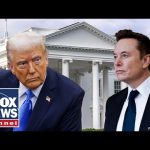President Donald Trump has unveiled a bold new trade strategy aimed at leveling the playing field for American workers and businesses. Dubbed the “Fair and Reciprocal Plan,” this initiative introduces tariffs that mirror the rates imposed by other nations on U.S. goods. For decades, foreign countries have enjoyed lopsided trade advantages, imposing steep tariffs on American exports while benefiting from minimal barriers when exporting to the United States. Trump’s plan seeks to end what he describes as a system that has “ripped off” American industries, signaling a significant shift in U.S. trade policy.
The concept is simple yet powerful: if a country charges high tariffs on American goods, the U.S. will impose equivalent tariffs on its exports. This approach directly challenges long-standing trade imbalances with countries like India, which levies an average tariff of 9% on U.S. goods, compared to the 3% rate America applies to Indian imports. Similarly, European nations charge a 10% tariff on U.S. cars while facing only 2.5% when exporting vehicles to America. By adopting this strategy, Trump aims to compel trading partners to negotiate fairer terms or face the economic consequences of losing access to the lucrative U.S. market.
Critics argue that such tariffs could spark a global trade war and increase costs for American consumers, but supporters see it as a necessary corrective to decades of unfair practices. The plan has already prompted some countries to reconsider their trade policies, with nations like India and members of the European Union reportedly exploring ways to lower their tariffs to avoid retaliation. This shift underscores the effectiveness of Trump’s “America First” approach, which prioritizes domestic manufacturing and job creation over multilateral agreements that often disadvantage U.S. workers.
From a conservative perspective, Trump’s reciprocal tariffs represent a long-overdue assertion of American sovereignty in global trade. For years, elites in Washington have prioritized international cooperation over protecting American industries, leaving blue-collar workers in manufacturing and agriculture to bear the brunt of bad deals. The president’s willingness to disrupt this status quo reflects his commitment to putting American interests first, even if it means challenging entrenched globalist norms.
The broader implications of this policy are profound. By introducing reciprocity into trade negotiations, Trump is not only addressing economic imbalances but also redefining America’s role in the global economy. This strategy sends a clear message: the United States will no longer subsidize foreign prosperity at its own expense. Whether this approach leads to more equitable trade agreements or escalates tensions remains to be seen, but for now, it is clear that Trump has reignited hope among those who believe in fair competition and economic nationalism.




